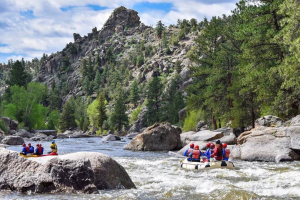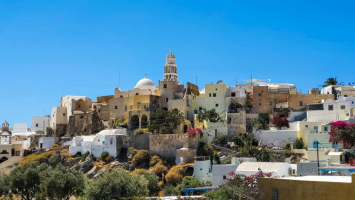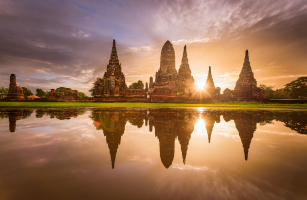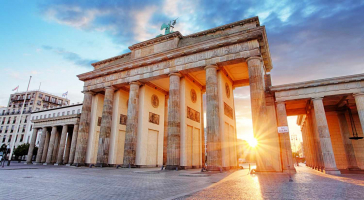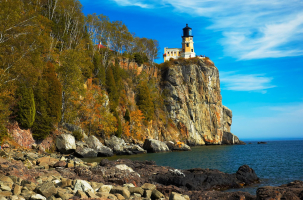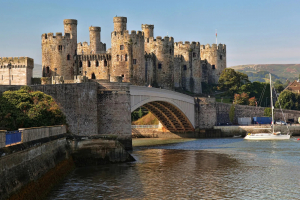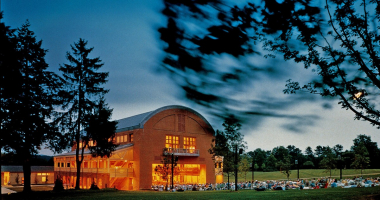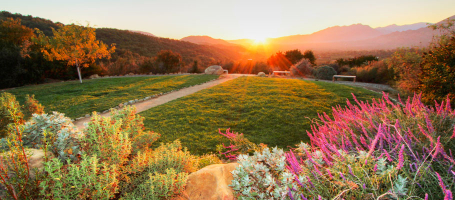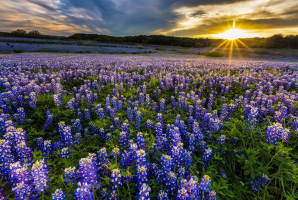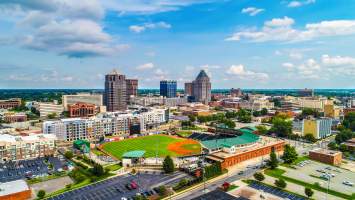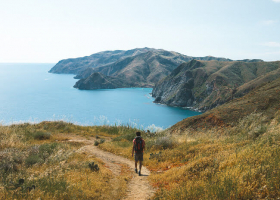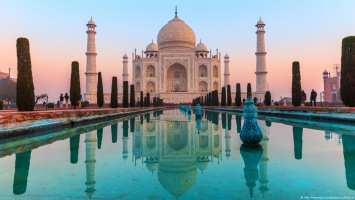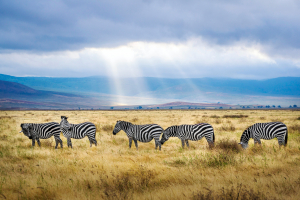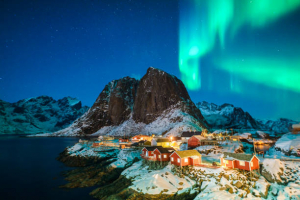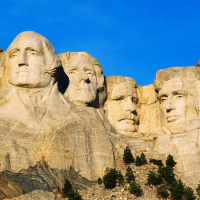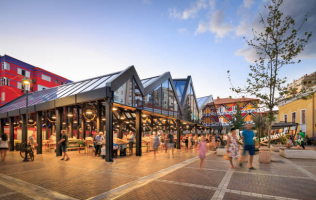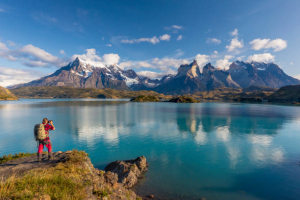Top 14 Best Things Do Do in Japan
There are so many fun and intriguing things to see and do in this island nation that it is difficult to compile a list of the top things to do in Japan. Both ... read more...new and historic cultural attractions can be found here in great variety. Check out the list of our best things to do in Japan below!
-
Onsen, the Japanese term for a hot spring, is central to much of Japanese culture. Numerous hot springs exist in Japan as a result of the country's volcanic activity; the Japanese frequently visit these hot springs to unwind.
The area around Nikko, at the base of Mount Fuji, then to the west of Shikoku Island, as well as the hot springs in Hakone, is where you'll find the majority of the onsen in Japan. Moreover, Kinosaki, a town close to Kyoto, is home to one of the most well-known onsens.
Anyone with a tattoo is not allowed to enter the public onsen. However, the admission ban law for tattoos is frequently waived in private guesthouses, or Ryokan.
Visit the onsen if you like to unwind in water that gets as hot as 40 degrees Celsius (104 degrees Fahrenheit). Remember that you should only sit in the warm water for around 10 minutes before taking a break.
In addition to offering a space to take off your clothing, changing rooms frequently contain shelves, baskets, and lockers where you can keep your stuff while you take a shower. There might also be a sink and a few extras, such a hair dryer or tissue. You may also find coin lockers or safe boxes where you can keep your valuables in a more secure location.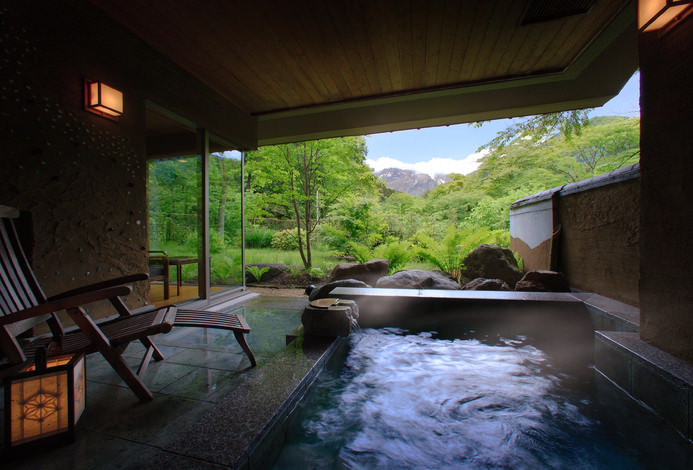
Phôt: SELECTED ONSEN RYOKAN - Hot spring baths at an onsen ryokan 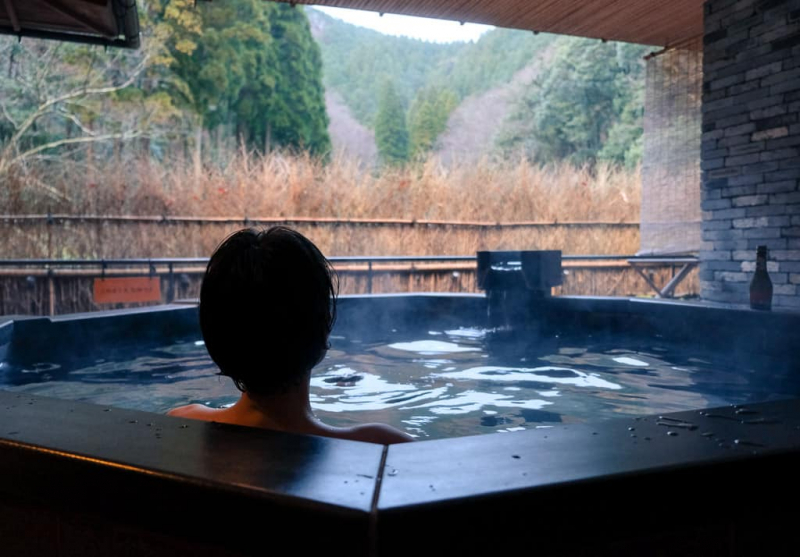
Photo: VOYAPON Kinosaki - Onsen: A Private Luxury Spa in Japan's Top Hot Spring Town -
A nuclear bomb was dropped on the city of Hiroshima in southern Japan during World War II. The city was rebuilt despite the fact that everything within two kilometers (1.2 miles) of the explosion location was destroyed. The Hiroshima Peace Memorial Park and Museum attracts a lot of visitors.
The A-Bomb Dome, a UNESCO World Heritage Site, is one of Hiroshima's main tourist destinations. This structure promoted the Hiroshima economy, and as the atomic bomb detonated, it was one of the few structures that was left standing.
Hiroshima gained notoriety for this unappealing distinction when the first atomic bomb was launched on the city on August 6, 1945. After the war, huge efforts were made to reconstruct the city despite the bomb's enormous devastation, which destroyed practically everything within a kilometer. The city turned out to be habitable, contrary to predictions. Hiroshima Castle and Shukkeien Garden, two historically significant monuments that were destroyed, were rebuilt. A sizable park was constructed in the city's center and given the name Peace Memorial Park to symbolize the goals of the revived city.
You may check out the Mazda Museum while you're in Hiroshima. The renowned automaker has allowed visitors access to the facility and part of the museum. Along with seeing the automobile production line and well-known car models, you will gain additional knowledge about the history of this brand.
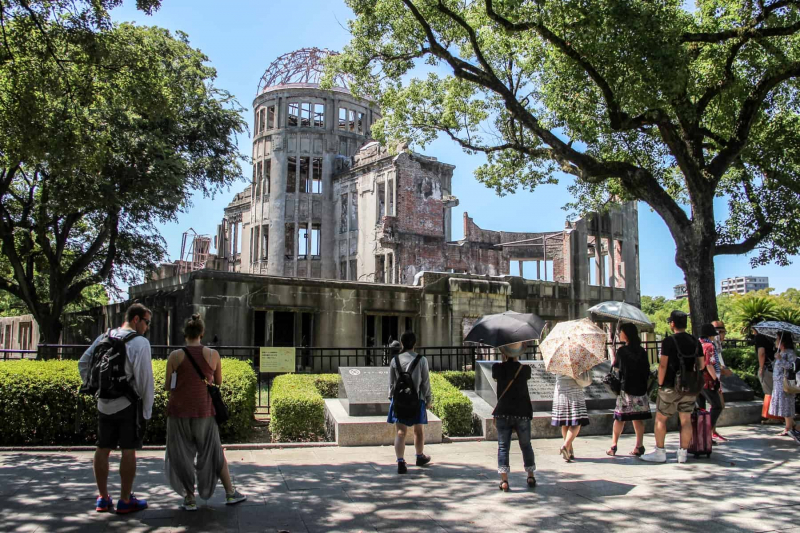
Photo: CNN - Hiroshima: One of Japan's most popular attractions 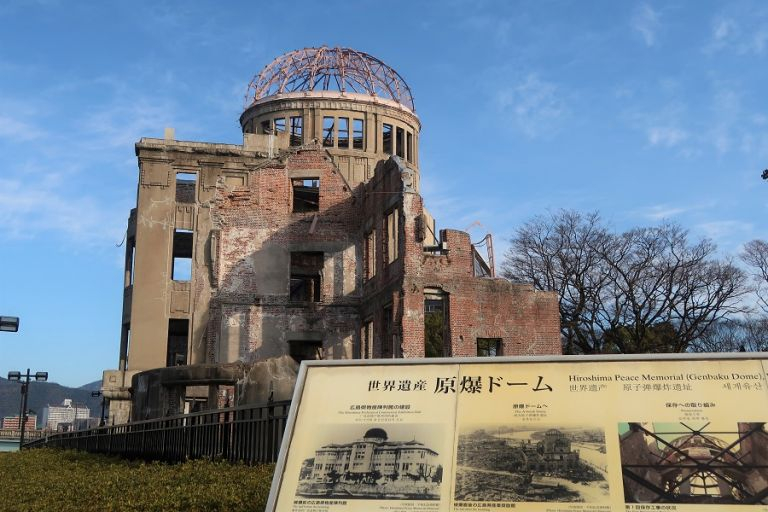
Photo: All Japan Tours - Hiroshima Peace Memorial Park -
Japan's national sport is sumo. The person who throws an opponent out of the ring wins this particular kind of wrestling. The contest only lasts a few seconds. The two sumo wrestlers face each other as they approach the ring before turning to their respective corners. They squat, stand up, elevate one leg, and then slam it back to the ground at the corner, followed by the other leg. They make a big deal out of it because their opponent is expected to be intimidated by it. In their corner, they use a ladle of water to rinse their lips before wiping their faces with some paper.
You will have to be eager to watch the Grand Sumo Tournament knowing that it will take place while you are in Japan. You should book your tickets in advance and eagerly look forward to the day when you can witness some sumo wrestling!
The finest place to see sumo wrestlers in action is during one of the major competitions conducted annually in Tokyo, Osaka, Nagoya, and Fukuoka. The Kokugikan sumo stadium, which is situated in Tokyo's Ryogoku area, hosts the majority of tournaments. You can schedule your visit to Japan to coincide with one of the tournaments, which each last 15 days.
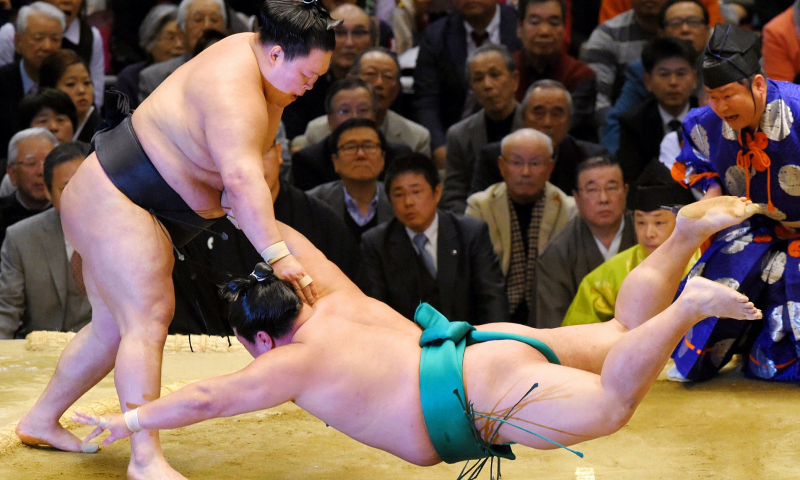
Photo: Japan Rail Pass - Sumo Wrestling in Japan 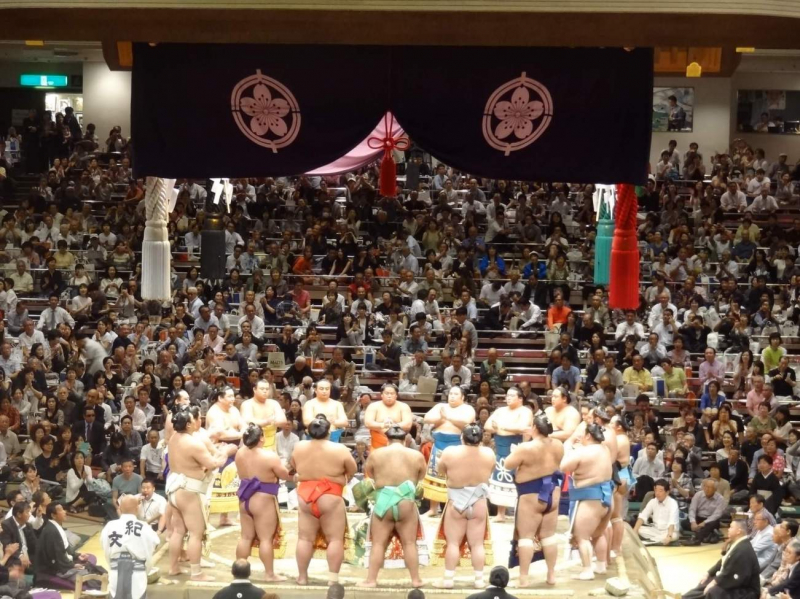
Photo: WAttention.com - Watching Sumo Live Up Close -
Up until 1869, Kyoto served as Japan's capital for a very long time. The city contains numerous ancient temples and castles because of this. One of this city's primary tourist attractions is a former imperial palace.
Kyoto's Gion neighborhood is well-known for its geishas. There are numerous eateries, tea rooms, and businesses in this area. The Fushimi Inari shrine, Kinkaku-Ji temple, and Monkey Park Iwatayama are three additional hip tourist destinations in Kyoto. However, Arashiyama Bamboo Forest, a stunning 4 km (2.48 miles) walking trail, is the most well-known location.
Kyoto is surrounded by nature, from the beautiful Arashiyama mountain scenery and swaying Sagano bamboo grove to the unending tunnel of torii shrine gates that wrap up the mountain in Fushimi and the breathtaking bay vistas and crystal blue waters of Ine-cho, dubbed "The Venice of Japan." The best location in Japan to view cherry blossoms is in Kyoto. The commencement of the cherry blossom season is typically in March.
The Nishiki Market in Kyoto is an interesting location. Fresh seafood that is produced locally as well as Kyoto specialties are offered at this historic market. This is a great spot for you if you enjoy trying new flavors. With this Kyoto early bird trip, you can avoid the crowds and take in one of Japan's most well-known tourist attractions.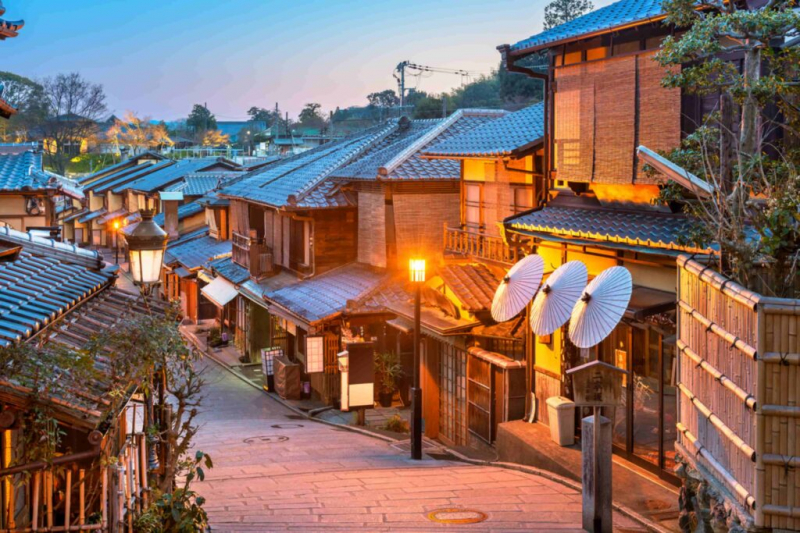
Photo: GaijinPot Travel - Kyoto 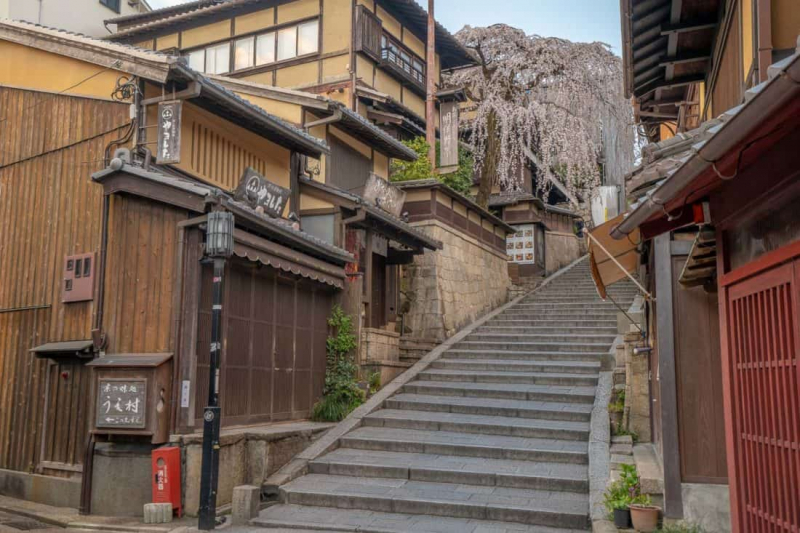
Photo: Never Ending Voyage -
The regional and traditional foods of Japan that have evolved over centuries of political, economic, and social change are included in Japanese cuisine. The foundation of Japanese traditional cuisine, known as washoku (Japanese for "seasonal food"), is rice with miso soup and other foods. Fish, pickled vegetables, and vegetables cooked in broth are common ingredients in side dishes. Commonly served grilled or raw as sashimi or in sushi, seafood is frequently consumed. In a thin batter, seafood and veggies are also deep-fried like tempura. Noodles like soba and udon are a staple in addition to rice. Numerous simmered foods are also popular in Japan, including beef sukiyaki and nikujaga as well as fish products in oden broth.
Japanese food is known for its delicious and unique flavors. Sushi, ramen, and tempura are a few delicacies you must try. Additionally, there are numerous options for street cuisine, like okonomiyaki and takoyaki (octopus balls) (Japanese pancakes). Japan is a fantastic place to sample new and intriguing flavors because it is also home to a range of sake and other alcoholic beverages.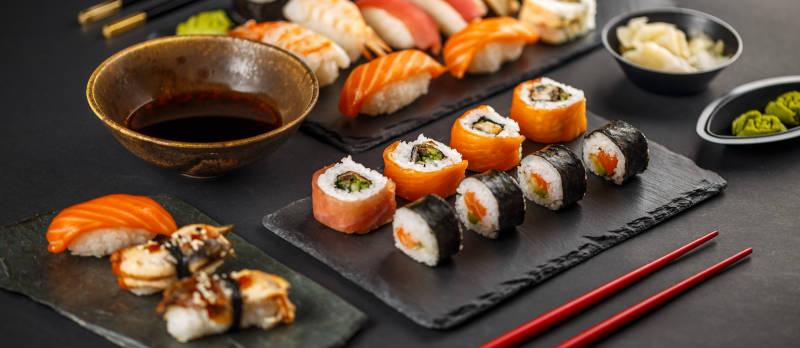
Photo: TasteAtlas - Most Popular Japanese Foods 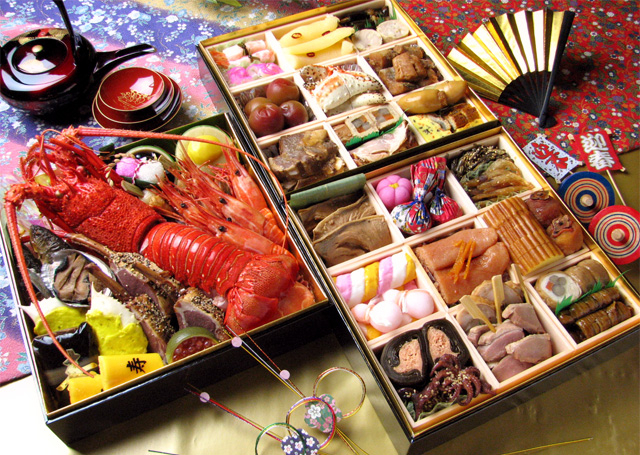
Photo: Wikipedia -
One of Tokyo's most visited tourist areas is Shibuya, known for its busy streets like "Shibuya Scramble Crossing." Given its abundance of stores and eateries, Shibuya is perhaps Tokyo's best area for shopping. Shibuya is well-known for being the epicenter of hip youth culture, along with its neighboring neighborhood of Harajuku. If you're looking for the newest in stylish clothing, Shibuya is the place to go.
In this greedy district, there are other types of shops in addition to fashion boutiques. In a wide price range, thousands of cool and distinctive products are offered for sale, including food, trinkets, electronics, home goods, anime merchandise, and more. Shibuya has everything you could possibly need!
One of the most frequented shopping areas in the city is Shibuya Crossing, a busy intersection in the center of Tokyo. It is a terrific spot to shop for gifts and souvenirs and is well known for its lively ambiance and vibrant neon lights. The region is an excellent spot to find a variety of things because it is home to several department stores, boutiques, and shopping centers. Shibuya Crossing is a terrific location to experience the commotion of Tokyo and is appropriate for visitors of all ages.
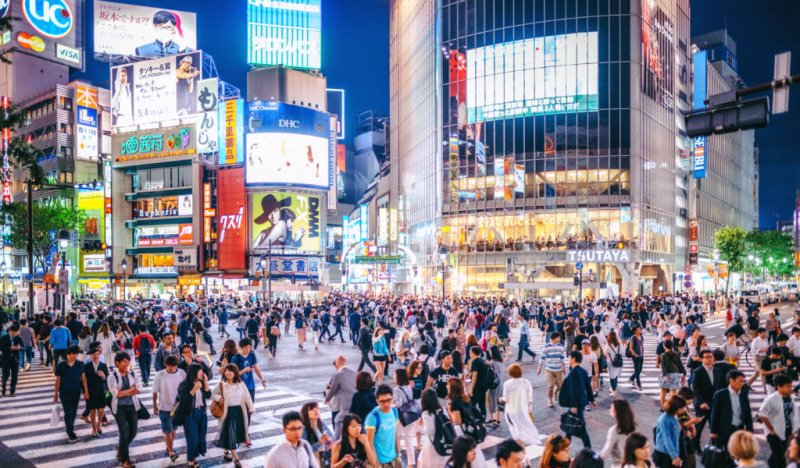
Photo: Tokyo Cheapo - Shibuya Area Guide 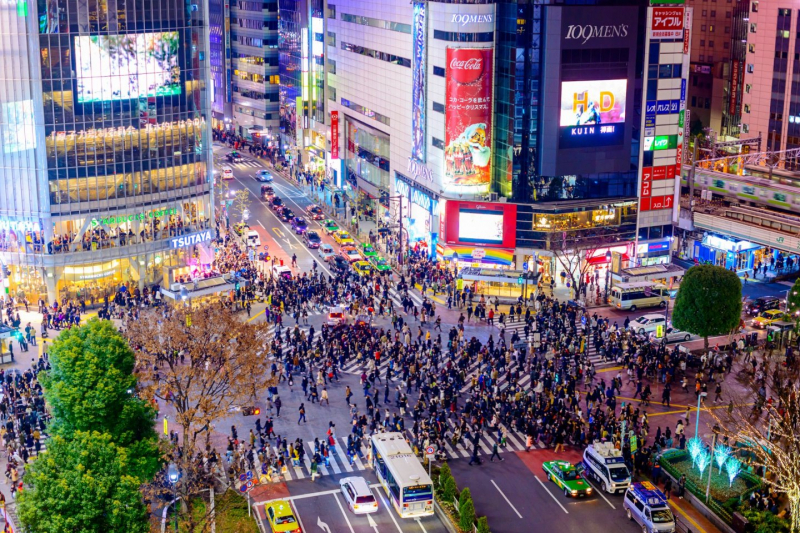
Photo: Japan Travel - Shibuya Crossing -
A museum honoring the creations of the renowned Japanese animation studio Studio Ghibli is called the Ghibli Museum. It is a well-liked location for anime and manga aficionados and is situated in the Tokyo suburb of Mitaka. In addition to interactive exhibitions and original artwork, the museum also hosts film screenings. It is a wonderful location for families with young children and a fantastic way to discover more about Japanese history and culture.
Hayao Miyazaki hoped that Studio Ghibli would "blow a new wind across the anime business" as the word "Ghibli" is an Italian word for a scorching desert wind. No matter what sort of magical or incredible things occurred during the course of the movie, Miyazaki aspired to build intricate, lush, and detailed worlds that viewers might feel like these worlds could be real.
The Ghibli Museum is devoted to showcasing the works of the studio and shedding light on the workings of the animation industry. You don't have to be a fan of Studio Ghibli to enjoy the incredible creativity on display or be utterly enchanted by the exhibitions, despite the fact that there are many references to the beloved movies throughout the museum!
The Ghibli Museum is a multi-story mansion on the outskirts of Tokyo's Inokashira Park (further information on how to get there is provided below). It captures the fascinating Studio Ghibli environment with its twists and turns, little entrances, winding staircases, and rooftop garden.
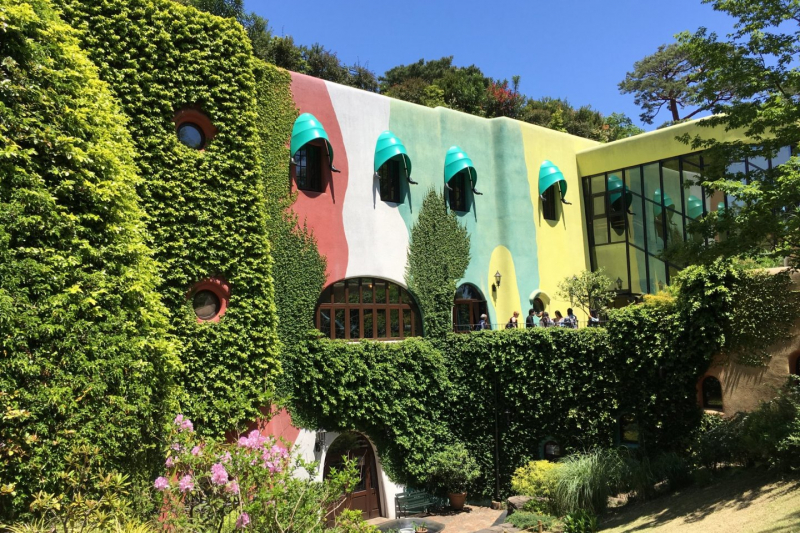
Photo: Travels With Nano Video: Inside The Studio Ghibli Museum -
The capital of Japan has more than 20 million people and many areas with exciting places to visit. One of the best things to do in Japan is perhaps experience completely diffrent areas in Tokyo. The center of Japanese pop culture, Harajuku is home to several fashion boutiques.
Shinjuku is Tokyo's major business and entertainment district. Along with bars and restaurants, it is well known for its clubs and karaoke rooms. Robot restaurant and the Metropolitan Government Office, which has observation decks, are two of the most well-liked spots there.
The downtown Tokyo neighborhood of Akihabara will win your heart if you have a passion for gadgets. There are several stores that sell electronic devices. We advise going to Radio Kaikan and the Tokyo Anime Center.
Asakusa is a great location to visit traditional craft stores. Hanayashiki Amusement Park and Sensoji Temple are both well-known tourist attractions in this region. Japanese beer, sweets, and street cuisine are also available for tasting here.
Ueno Park, home to the Ueno zoo and a number of institutions, is another fantastic location worth seeing in Tokyo. The museum exhibits, notably those at the Tokyo Metropolitan Art Museum and the Tokyo National Museum, will delight you.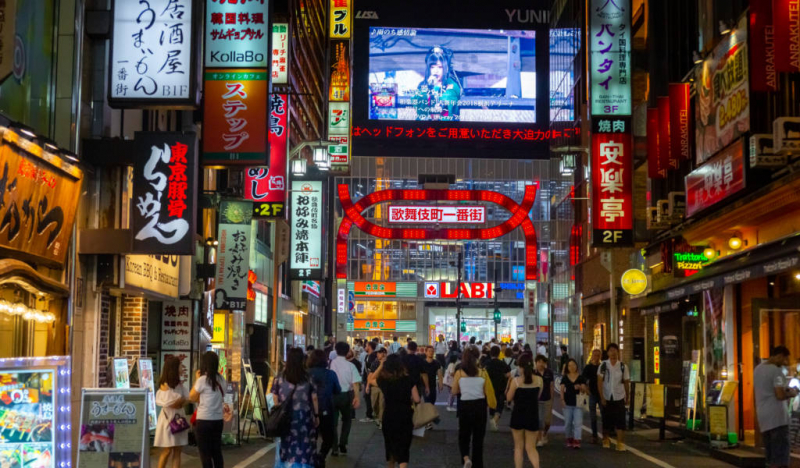
Photo: Tokyo Cheapo - Shinjuku Area Guide 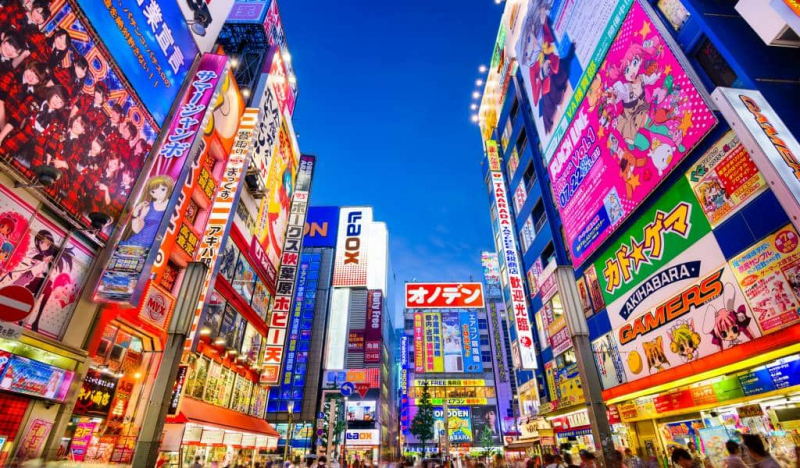
Photo: iVIVU.com - Akihabara district in central Tokyo -
The Shinkansen, or bullet train as it is known in Japan, is the quickest mode of transportation when visiting Japan. By reducing the distance traveled between places, these high-speed trains enable tourists to quickly and conveniently see Japan. Shinkansen trains in Japan are also incredibly reliable and on time, so you'll arrive at your destination prepared to explore your new surroundings.
Public transportation in Japan is very well organized thanks to shinkansen bullet trains. All of the country's regions are connected by these lines, which are run by Japan Railways. The maximum speed of bullet trains is 320 km/h (almost 200 miles an hour).
In Japan, there are nine shinkansen lines that collectively connect the islands of Kyushu, Honshu, and Hokkaido. This means that you can either travel west beyond Osaka and Hiroshima to Kagoshima or north from Tokyo up to Hakodate on Hokkaido. You can purchase tickets for bullet trains online, at ticket offices or vending machines.
On the bullet train, you can bring two pieces of luggage. Along with having room for wheelchair users, trains also include escalators and elevators. The Shinkansen network's trains are reliable, comfortable, and on time.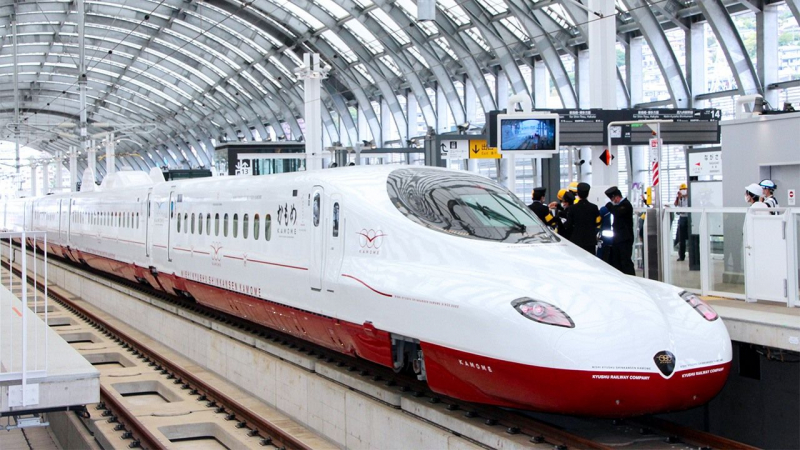
Photo: nippon.com -The Shinkansen: Japan's Bullet Train Video: Gabriel Traveler -
Beautiful cherry blossom trees that bloom each spring can be found across Japan. In Japan, people flock to the Cherry Blossom Festival, also known as Hanami, to take in the cherry blossoms and enjoy picnics beneath the trees. The festival is appropriate for people of all ages and offers a wonderful chance to learn about Japanese culture.
To honor the friendship between the United States and Japan, the mayor of Tokyo presented 3,000 cherry trees to the city of Washington, DC, back in 1912.
The region's most well-known attraction now is the pink-and-white blooms, and the National Cherry Blossom Festival, which draws hundreds of thousands of people over several weeks in March and April, is the most well-liked event there.
Take a stroll along Independence Avenue, along the Tidal Basin to the Jefferson Memorial, or sign up for a free tour with a guide to learn about the trees' origins in Washington, DC. At the Tidal Basin, you can rent paddleboats to take in the scenery from the water. Additionally, excursions on the Potomac River provide breathtaking views of the monuments and cherry trees. Bike and Roll's two-hour Flowers By Bike trip, the festival's official bike tour, offers a thorough bicycle tour of the blossoms. Peak bloom normally happens in the first few days of April, however the exact date changes every year based on the weather.
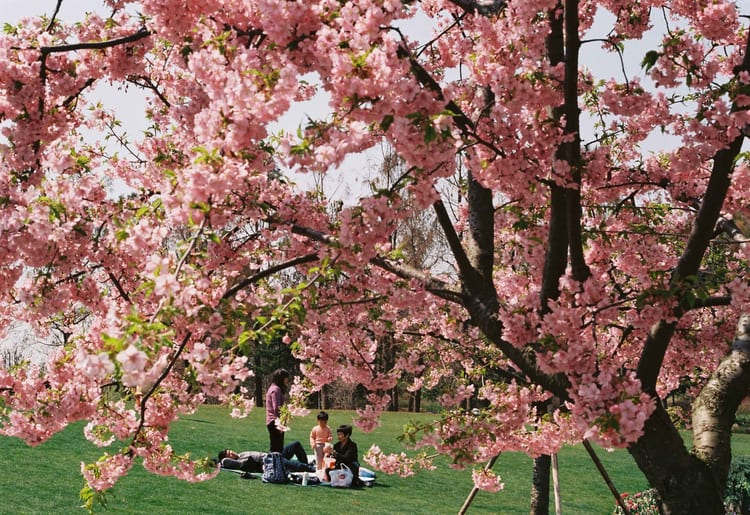
Photo: Klook Hanami - Experience Cherry Blossom Festival In Japan Like A Local - Klook Travel Blog 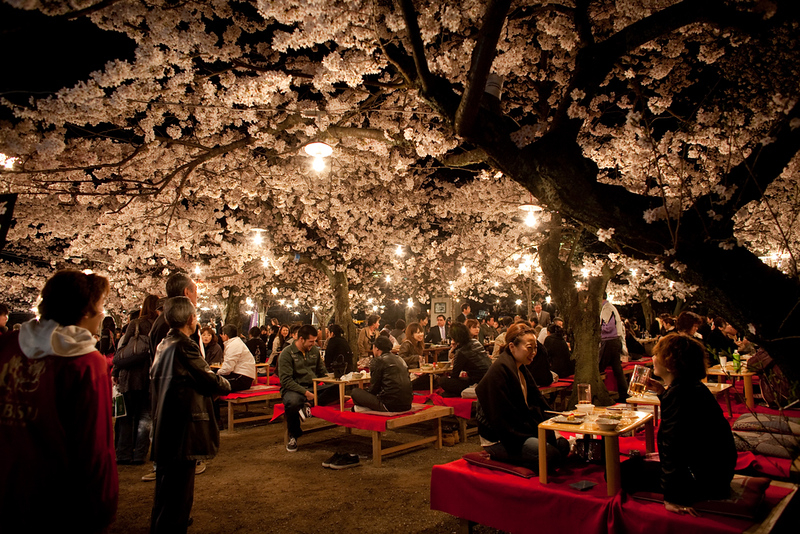
Photo: Inside Kyoto - Kyoto Evening Cherry Blossom Itinerary -
A unique kind of straightforward, inexpensive lodging is a capsule hotel, commonly referred to as a pod hotel. Each visitor has their own capsule, which is effectively a bed-sized pod that can be closed with a door or a curtain (the door will not lock, as per Japanese law). These capsules are double-stacked and organized in rows. Your capsule will likely contain an air conditioner and electricity outlets for charging your electronics, but this is not a given. Items are often kept in a hotel-provided locker.
In Osaka, Japan, the first capsule hotel debuted in 1979. They are now widespread throughout Japan and abroad.
Prepare yourself for an unforgettable Japanese adventure. Look through the piles of capsules before climbing the ladder to enter your "space pod." There is ample room to cross your legs while you relax on the comfortable mattress and take in the cozy atmosphere.
A bed is provided in a capsule hotel because in Japan, privacy is very important. The community restrooms, where there are typically plenty of shower cubicles, are where the spaciousness occurs. Although some weekend revelers may snore in the less expensive capsule motels, most people are exceedingly respectful. Since there are no social activities allowed here, it's the perfect destination for lone travelers who just want to get some rest in what appears to be a clean space station.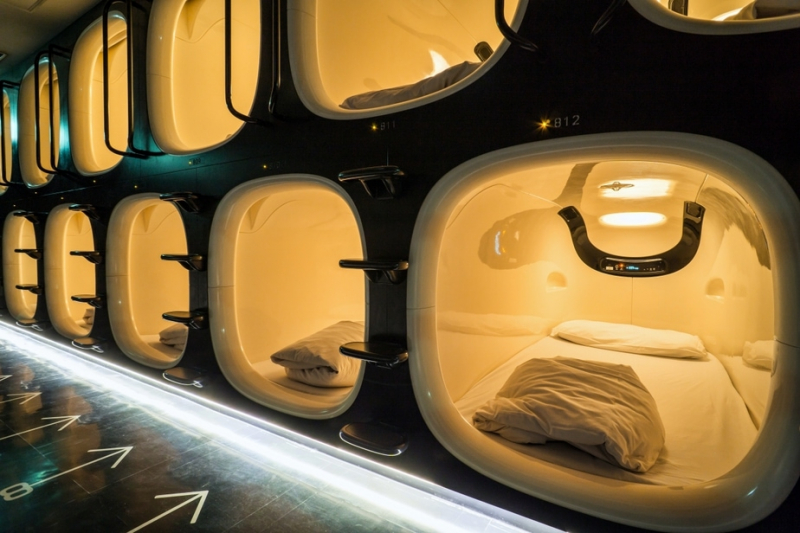
Photo: KKday - A Capsule Hotel In Japan 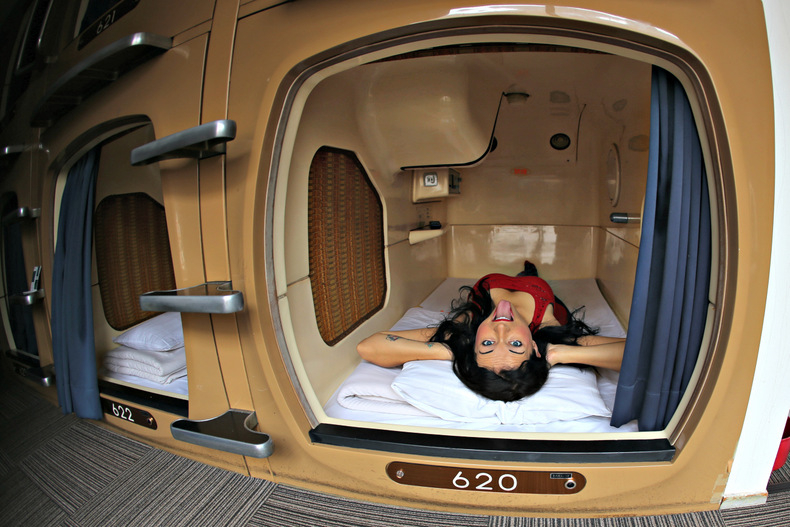
Photo: The Legendary Adventures of Anna - Capsule Hotels in Japan -
The Japanese people hold their culture in the highest regard. Shinto shrines and Buddhist temples are frequented by significant numbers of tourists throughout Japan. The Sensoji Temple in Tokyo, the Todaiji Temple in Nara, the Fushimi Inari shrine in Kyoto, and other revered sites are among Japan's most well-known shrines and temples.
Japanese people travel to Shinto shrines to pray or make wishful thinking requests. The kami (deities) include people who founded strong clans, small shrines dedicated to neighborhood deities, Princess Konohanasakuya, the Shinto deity of Mount Fuji, and others. Many shrines have a wall of wooden tablets (ema) hanging there where you can write your prayer or gift for the gods to read. It gives guests a chance to pause and take in their surroundings' peace.
A Shinto shrine is a natural setting where the wind and trees are framed by a huge gate. Pray to the kami of rice at Kyoto's Fushimi Inari-Taisha and its tunnel of golden torii gates, for successful test results at Dazaifu Tenman-g, an imperial shrine with a chrysanthemum crest, or at Japan's oldest Shinto shrine, Izumo Taisha, in Tokyo.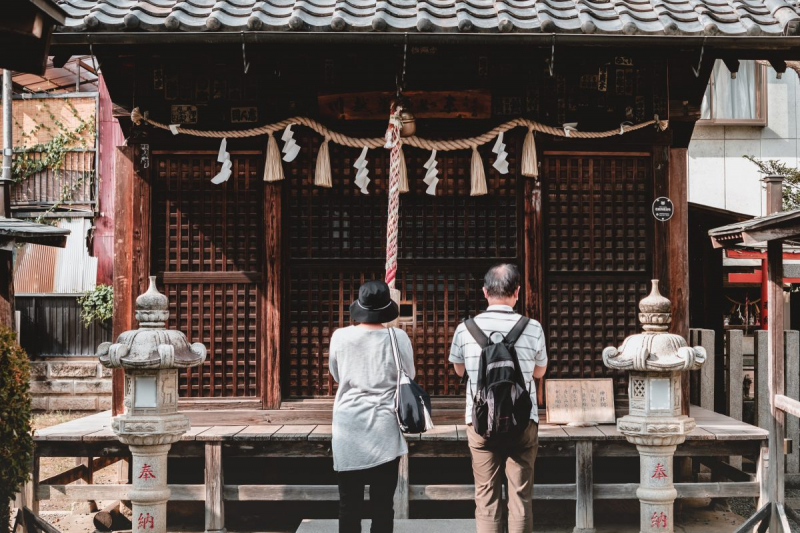
Photo: Japan Wonder Travel Blog - Pray at Japanese Shinto Shrines 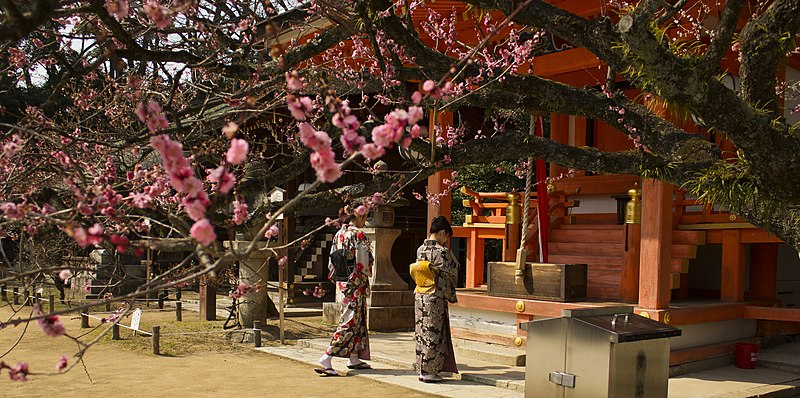
Photo: Wikipedia - Shinto shrine -
Japan is a maritime-born nation. Here, you may enjoy the freshest sashimi, visit wooden storefronts from bygone eras, and watch squid dry on rotating racks in the sun. So it makes sense to recommend "relax in towns by the sea" on the list of best things to do in Japan.
Hayao Miyazaki, a master of anime, was inspired to create Ponyo on the Cliff by the Sea by Tomonoura. No surprise there; the views from a hilltop temple are stunning, featuring verdant hills that protect traditional Japanese homes and a little harbor full of bobbing white boats.
The Oki Islands are a natural seaside haven with outcropping rock formations, peaceful sea coves, the tallest sea cliffs in Japan, old-world fishing communities, and beautiful waters all to yourself. You can see a variety of plants and perhaps even little grazing horses while on one of the many beach walks. Okinawa is an island paradise if you go really slowly.
Local tips: The nicest sunsets in Japan can be seen in Matsue. A torii gate can be seen in the distance on a shimmering island as the enormous red ball disappears into the lake.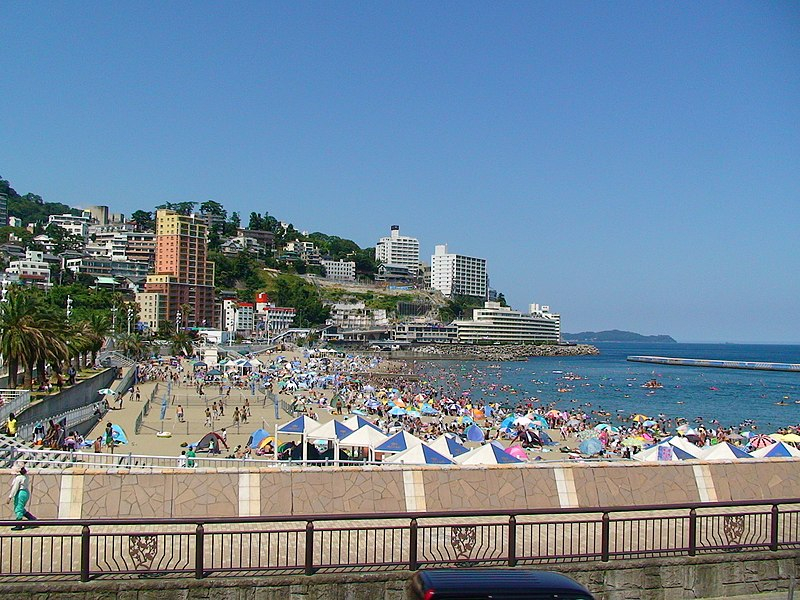
Photo: Wikivoyage - Atami 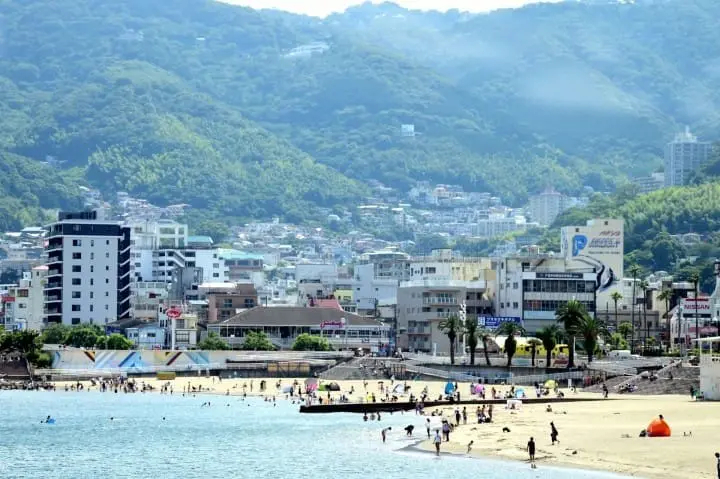
Photo: Japan Wonder Travel Blog -
The second-largest city in Japan is Osaka, also referred to as the "Venice of the East." The most well-known of the city's attractions is Universal Studios Japan. The 130-acre theme park contains attractions that are cinc-inspired and offers a beautiful world of thrilling experiences for both children and adults. Participate in enjoyable activities like employing a magic wand to terrify your pals. Take a 4K3D journey later to see Spider-Man save the day. It is all the more incentive to reserve your tickets to Universal Studios Japan given that it is ranked fifth among the top 25 theme parks in the world.
Universal Studios Osaka was undoubtedly very different from any theme park you had previously visited. Although you might not have understood the Japanese-speaking Harry Potter, you might not have known who any of the anime characters were, and you might not have been used to some of the odd snacks served throughout the park, it was these particular Japanese quirks that made your time at USJ so enjoyable.
The park is home to a number of thrilling rides and attractions, including The Amazing Adventures of Spider-Man, Jurassic Park: The Ride, and Harry Potter and the Forbidden Journey. A wide range of dining options, including Japanese and foreign cuisine, are available at the park.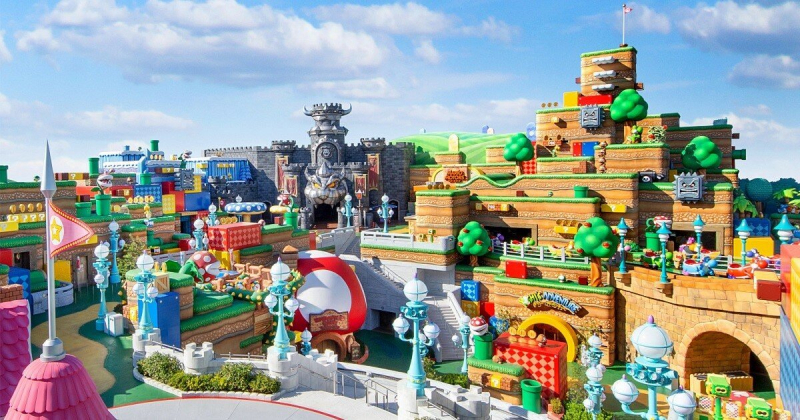
Photo: Tripadvisor - Universal Studios Japan 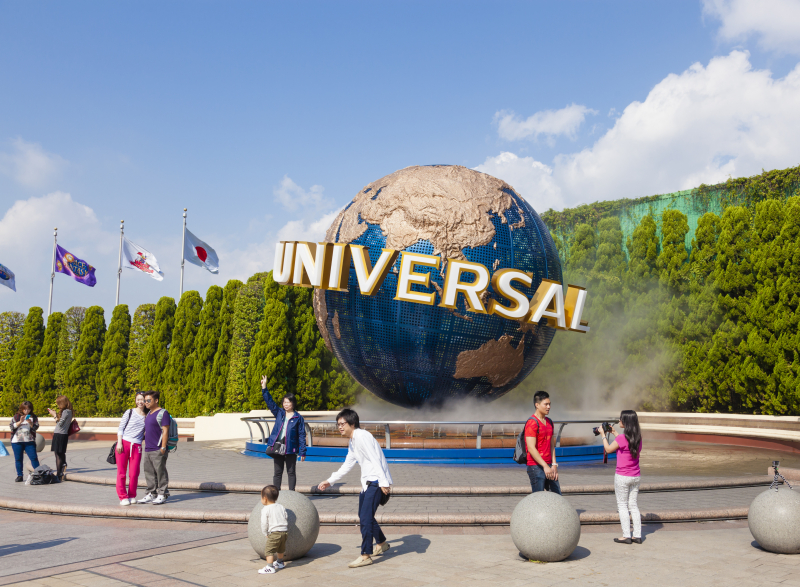
Photo: Tripadvisor Universal Studios Japan
















